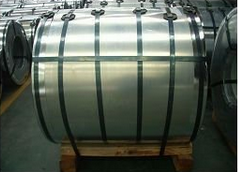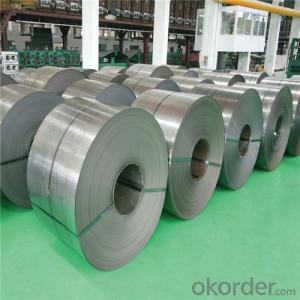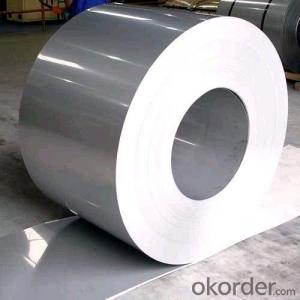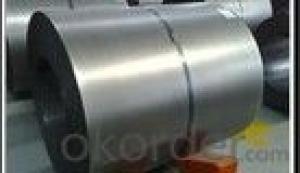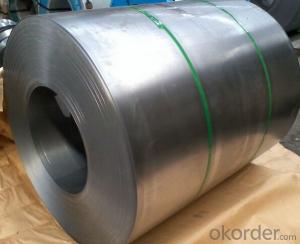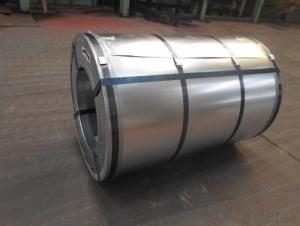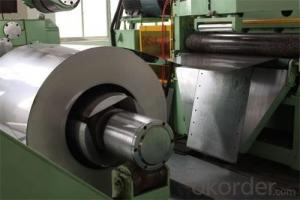Manufacturer High Quality Cold Rolled Steel
- Loading Port:
- Tianjin
- Payment Terms:
- TT OR LC
- Min Order Qty:
- 25 m.t.
- Supply Capability:
- 10000 m.t./month
OKorder Service Pledge
OKorder Financial Service
You Might Also Like
Basic Info.
Certification:ISO
Technique:Cold Rolled
Standard:GB
Application:Container Plate
Edge:Slit edge
Stock:Stock
Steel Grade:SPCC DC05
Export Markets:Global
Additional Info.
Packing:According to The Customer Request
Standard:SGS. ISO
HS Code:72099000
Production Capacity:250000ton/Year
Product Details
Basic Info.
Technique:Cold Rolled annealing skim
Steel Grade:spcc dc05
Technique:Cold Rolled
Export Markets:Global
Approved Certificate:SGS & ISO
Surface Treatment:Oiled
Additional Info.
Trademark:xianghe
Packing:Standard Seaworthy Packing, Bundle or Pallet
Origin: Zibo,Shandong,China
HS Code:72099000
Product Description.
1.Thickness: 0.2mm-1.3mm
2. Width:660mm~1000mm
3. Inner Diameter: 508mm
4. Weight of Steel Coil: 3-15MT
5. Heat Treatment: Annealed
6. Surface Quality: FB&FC
7. Surface Status: SB & SD
| Skim the steel plate | Cold rolled steel sheet | ||
| width | Thickness(mm) | width | Thickness(mm) |
| 660mm~1000mm | 0.2mm-1.3mm | 660mm~1000mm | 0.2mm-1.3mm |
Cold Rolled Steel is steel that has been worked below its recrystallization temperature by passing it between a pair of rollers. Recrystallization temperature is the temperature at which grains in the lattice structure of the metal have been rearranged, leaving it free of strain and deformations. Cold Rolled Steel is pre-treated before being cold rolled with a process known as pickling, which uses strong acids to remove scale and other impurities. The Cold Rolled Steel is then passed through rollers to reduce its thickness.
- Q: How are steel coils used in the production of pipes?
- Steel coils are used in the production of pipes by being uncoiled and passed through a series of forming rolls to shape them into a cylindrical tube. These coils provide the raw material needed for pipe manufacturing and ensure a consistent and high-quality product.
- Q: How are steel coils inspected for surface cleanliness after processing?
- Steel coils are inspected for surface cleanliness after processing through various methods such as visual inspection, magnetic particle inspection, and fluorescent penetrant inspection. These techniques help identify any surface defects, contaminants, or impurities on the steel coils, ensuring their quality and suitability for further use or shipment.
- Q: What are the different types of steel coatings used on coils?
- There are several types of steel coatings used on coils, including galvanized coatings, zinc-nickel coatings, aluminum-zinc coatings, and organic coatings.
- Q: How are steel coils inspected for yield strength using tensile testing?
- Steel coils are inspected for yield strength using a testing technique called tensile testing. Tensile testing involves subjecting a sample of the steel coil to controlled tension until it reaches its breaking point. This test helps determine various mechanical properties of the steel, including yield strength. To inspect steel coils for yield strength using tensile testing, a small strip of the coil is cut and prepared for testing. The strip is placed in a tensile testing machine, which consists of two grips that firmly hold the strip at opposite ends. The machine then applies a steadily increasing force to the strip, causing it to elongate until it ultimately breaks. During the test, the machine measures the force applied and the elongation of the strip. The yield strength is determined by identifying the point on the stress-strain curve where the material begins to deform plastically, or exhibit permanent deformation without any increase in load. The yield strength is typically reported as the stress required to cause a specific amount of plastic deformation, commonly 0.2% or 0.5%. This value represents the maximum stress that the steel can withstand without permanent deformation occurring. By conducting tensile testing on a sample of the steel coil, it is possible to determine its yield strength. This information is crucial for ensuring the quality and reliability of the steel coil, as it indicates the maximum stress it can withstand before permanent deformation occurs. Additionally, this testing method allows for the evaluation of other mechanical properties, such as ultimate tensile strength, elongation, and modulus of elasticity, providing a comprehensive understanding of the steel's performance characteristics.
- Q: Can steel coils be returned if they are damaged?
- Yes, steel coils can be returned if they are damaged. However, the return policy may vary depending on the supplier or manufacturer. It is important to check the terms and conditions of purchase, including any warranty or guarantee, to understand the specific guidelines for returning damaged steel coils.
- Q: Stains tends to leave on the stainless steel microwave oven and its very hard to clean off the stain (brownish stain) please suggest the best way to remove it.
- They make a stainless steel polish that will do the trick.
- Q: What are the benefits of using steel coils in the manufacturing of pipes?
- Using steel coils in the manufacturing of pipes has several advantages: 1. Strength and durability: Steel is renowned for its strength and durability, making it an ideal material for pipes. By utilizing steel coils, pipes are provided with a solid foundation, enabling them to withstand high-pressure applications and resist damage from external factors such as impact or corrosion. This strength and durability increase the lifespan of the pipes, reducing the need for frequent replacements. 2. Customizability: Steel coils offer a high degree of flexibility in terms of customization and design. They can be easily formed into various pipe shapes and sizes, allowing manufacturers to produce pipes that meet specific project requirements. This flexibility also allows for the production of seamless pipes, which have superior structural integrity and a reduced risk of leakage. 3. Excellent thermal conductivity: Steel possesses excellent thermal conductivity, meaning it efficiently transfers heat or cold. This property is essential for pipes used in industries such as oil and gas, where temperature control is crucial. By utilizing steel coils, pipes can effectively handle extreme temperatures, preventing any damage to the pipes or the substances flowing through them. 4. Cost-effectiveness: Steel coils can be produced in large quantities, resulting in economies of scale and lower production costs. This cost-effectiveness benefits both manufacturers and consumers, as it helps keep the overall cost of pipes down. Additionally, the durability of steel pipes reduces the need for frequent repairs or replacements, resulting in long-term cost savings. 5. Enhanced corrosion resistance: Steel coils can be coated with protective layers to enhance their resistance to corrosion. This corrosion resistance is vital in applications where pipes come into contact with corrosive substances or are exposed to harsh environmental conditions. By utilizing steel coils with appropriate coatings, manufacturers can ensure that their pipes have a longer lifespan and maintain their structural integrity even under challenging circumstances. In conclusion, the utilization of steel coils in pipe manufacturing provides numerous benefits, including strength, customizability, thermal resistance, cost-effectiveness, and corrosion resistance. These advantages make steel coils the preferred choice for many industries that rely on durable and efficient piping systems.
- Q: gigantic navy ships made of steel float, why??
- Concrete boats also float, Capt Johns link explains that. It is area + weight + volume. Displacement. Buoyancy is achieved by Displacing fN or X.
- Q: How are steel coils used in the manufacturing of construction materials?
- Steel coils are used in the manufacturing of construction materials as they are processed and shaped into various components such as beams, columns, and reinforcement bars. These coils are unwound and fed into machines that cut, bend, and mold them into the required shapes, ensuring the strength and durability of the construction materials.
- Q: Is infi steel as good as busse knives make it sound. If so why don't any other brands use it. Also are there any tactical folders that use infi steel. If infi isn't as good as it's cracked up to be then what is the best alternative.
- Infi Steel Knives
Send your message to us
Manufacturer High Quality Cold Rolled Steel
- Loading Port:
- Tianjin
- Payment Terms:
- TT OR LC
- Min Order Qty:
- 25 m.t.
- Supply Capability:
- 10000 m.t./month
OKorder Service Pledge
OKorder Financial Service
Similar products
Hot products
Hot Searches
Related keywords



